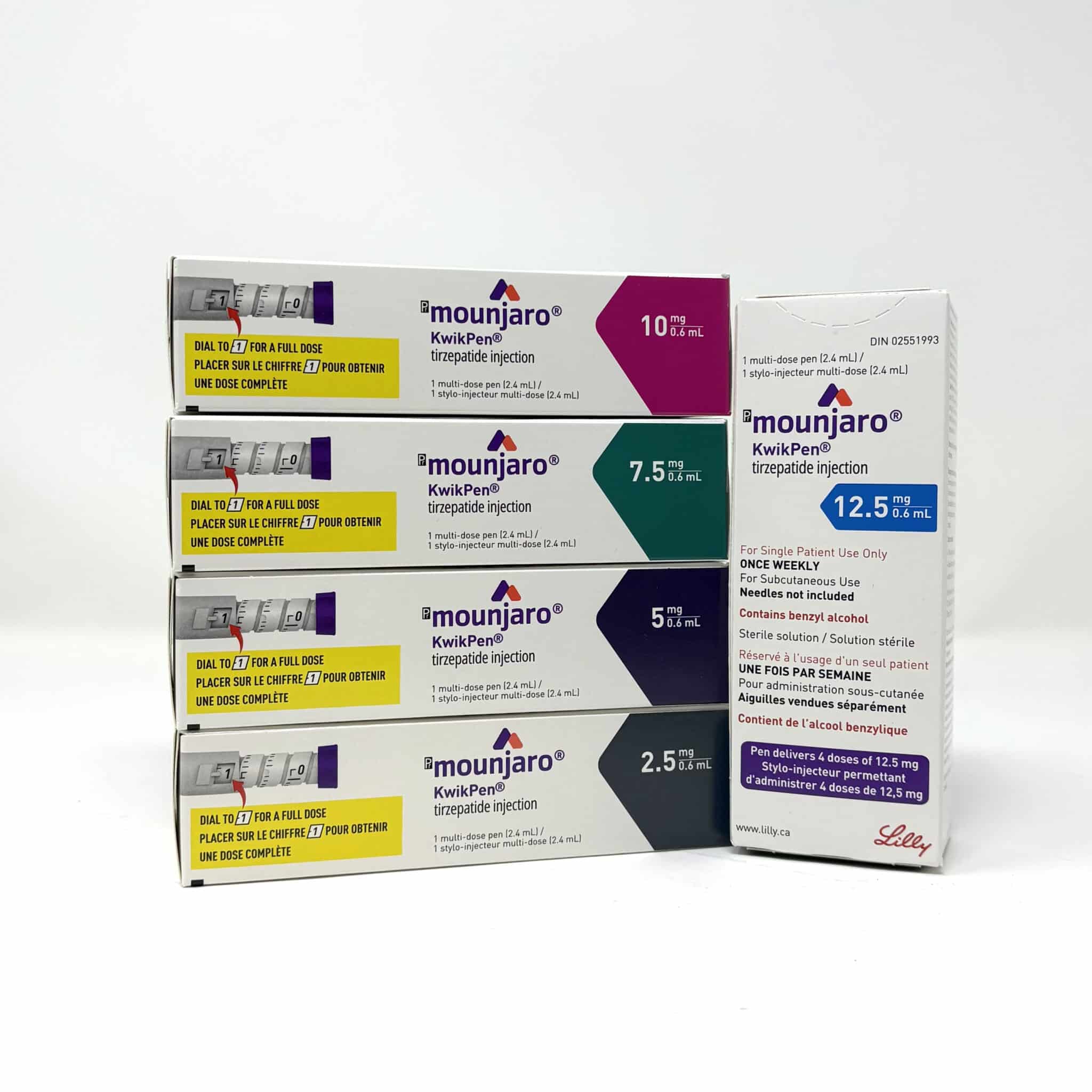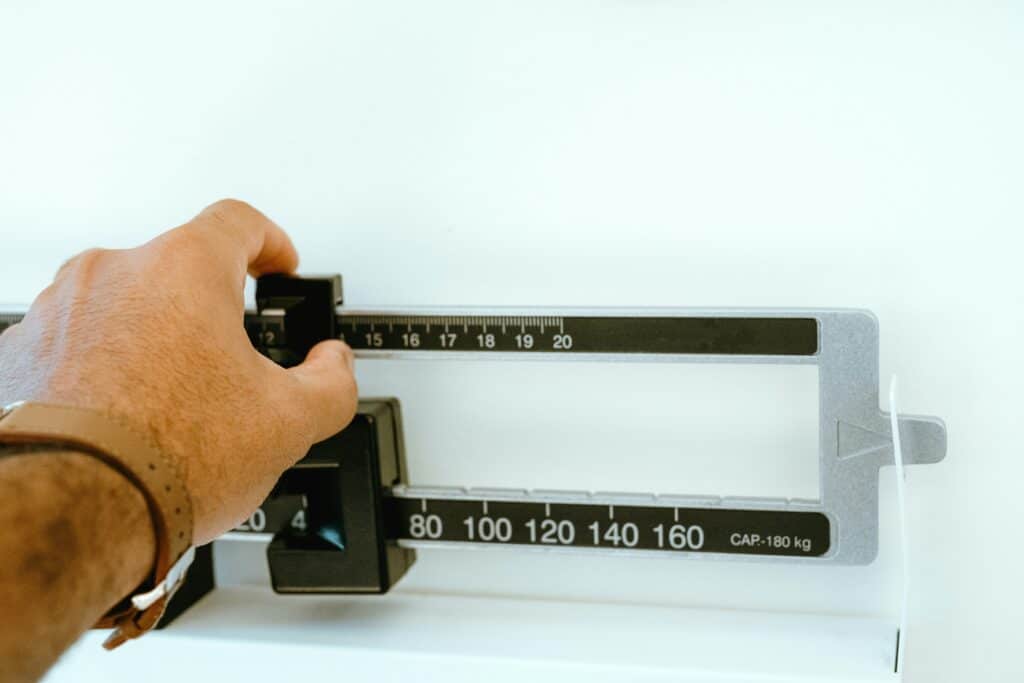Understanding the Highest Dose of Mounjaro and How It Compares to Wegovy
Understanding the Highest Dose of Mounjaro and How It Compares to Wegovy
- Todd P
Mounjaro (tirzepatide) has become a popular medication for type 2 diabetes and weight loss, with many patients working their way up to higher doses to achieve their treatment goals. But what is the highest dose of Mounjaro, and how does it compare to other weight loss medications like Wegovy? This article will discuss the highest available dose, how to increase dosage safely, and why some patients adjust their dosing strategy to manage side effects.
What Is the Highest Dose of Mounjaro?
Mounjaro is available in multiple doses, with the highest approved dose being 15 mg once weekly. Patients typically start on a lower dose and increase over time as tolerated to minimize side effects like nausea, vomiting, and digestive discomfort.
Mounjaro Dosage Titration
Mounjaro treatment follows a gradual dose increase to allow the body to adjust:
Starting Dose: 2.5 mg once weekly (not intended for long-term use)
Dose Increases: Incremental increases every 4 weeks as tolerated (e.g., 5 mg → 7.5 mg → 10 mg → 12.5 mg → 15 mg)
Highest Dose: 15 mg once weekly (for those who need maximum efficacy)
Why a Slow Increase Is Necessary
Starting at a lower dose and gradually increasing to 15 mg helps the body adapt to the medication, reducing the risk of severe side effects. Patients who escalate their dose too quickly are more likely to experience gastrointestinal distress, which can interfere with daily life and make it harder to continue treatment.
How Does Mounjaro’s Highest Dose Compare to Wegovy?
Wegovy (semaglutide) is another GLP-1 receptor agonist used for weight loss. Unlike Mounjaro, Wegovy is designed exclusively for weight management. The highest dose of Wegovy is 2.4 mg once weekly. Although Mounjaro’s dosing is measured differently, studies suggest that tirzepatide (Mounjaro) may be more effective for weight loss than semaglutide (Wegovy) at comparable doses.
Key Differences Between Mounjaro and Wegovy at Higher Doses:
Mounjaro (Tirzepatide): 15 mg weekly
Wegovy (Semaglutide): 2.4 mg weekly
Dual Mechanism in Mounjaro: Targets GLP-1 and GIP receptors, making it more potent in some patients
Weight Loss Potential: Some studies show Mounjaro 15 mg can lead to greater weight loss than Wegovy’s 2.4 mg dose, with some patients achieving up to 20% total body weight loss compared to 15% with Wegovy.
Dosing Flexibility: Mounjaro’s multi-step titration process allows for a more personalized approach, whereas Wegovy follows a fixed increase schedule. This titration process can be beneficial for patients who struggle with side effects at higher doses.
Why Patients Need to Increase Mounjaro Slowly
While higher doses of Mounjaro offer better blood sugar control and weight loss, increasing too quickly can lead to significant side effects, including:
Severe nausea and vomiting
Diarrhea or constipation
Abdominal pain or bloating
Reduced appetite leading to inadequate nutrition
Dizziness or fatigue due to rapid weight loss
To prevent these issues, healthcare providers gradually titrate the dose over time, allowing patients to adjust to the medication with fewer disruptions.
Managing Side Effects at Higher Doses
Stay Hydrated: Dehydration can worsen nausea and dizziness.
Eat Small, Frequent Meals: Large meals can increase gastrointestinal discomfort.
Monitor Weight Loss: Losing weight too quickly may lead to muscle loss or fatigue.
Using the Highest Dose of Mounjaro to Dose Smaller Amounts
Some patients who struggle with side effects may use higher-dose Mounjaro pens to administer lower doses. This strategy, often called “click counting” or microdosing, allows patients to control their intake while reducing medication waste.
For example:
A 15 mg Mounjaro pen can be used to deliver a lower dose, such as 7.5 mg or 10 mg, by counting clicks to avoid side effects.
This method may benefit patients who cannot tolerate rapid dose escalation but still want the benefits of Mounjaro.
Patients who need to slowly work up to 15 mg may use this method to adjust their intake more gradually than standard titration.
Is the Highest Dose of Mounjaro Right for You?
Not everyone needs to take 15 mg of Mounjaro. The best dose depends on:
Treatment goals (blood sugar control, weight loss, or both)
How well your body tolerates the medication
Side effects experienced at lower doses
Other medications or conditions that may interact with Mounjaro
For some, a lower maintenance dose (such as 10 mg or 12.5 mg) may be sufficient for sustained results without unnecessary side effects.
Switching From Wegovy to Mounjaro
Some patients who have been using Wegovy may consider transitioning to Mounjaro, especially if they have reached a weight loss plateau or are not seeing their desired results. Switching between these medications should always be done under medical supervision, as they work differently in the body.
Considerations When Switching:
Titration Process: Patients switching from Wegovy to Mounjaro will likely need to start at the lower 2.5 mg dose and gradually increase to their optimal dosage.
Weight Loss Expectations: While Wegovy targets GLP-1 receptors, Mounjaro works on both GLP-1 and GIP receptors, which may enhance weight loss for some patients.
Side Effects: Since Mounjaro works differently, some patients may experience different gastrointestinal side effects, requiring an adjustment period.
Patients should discuss their options with a healthcare provider to determine if switching from Wegovy to Mounjaro is right for them.
Final Thoughts
Mounjaro’s highest dose of 15 mg provides strong benefits for both weight loss and diabetes management, but patients should increase doses gradually to minimize side effects. Additionally, those who struggle with tolerability may choose to use a higher-dose pen to administer smaller, controlled doses as needed.
For patients exploring Mounjaro as a weight loss or diabetes treatment, speaking with a healthcare provider about titration schedules, managing side effects, and dosing flexibility is essential. Proper dose adjustments and monitoring can help maximize benefits while minimizing potential discomfort.
Reference:


